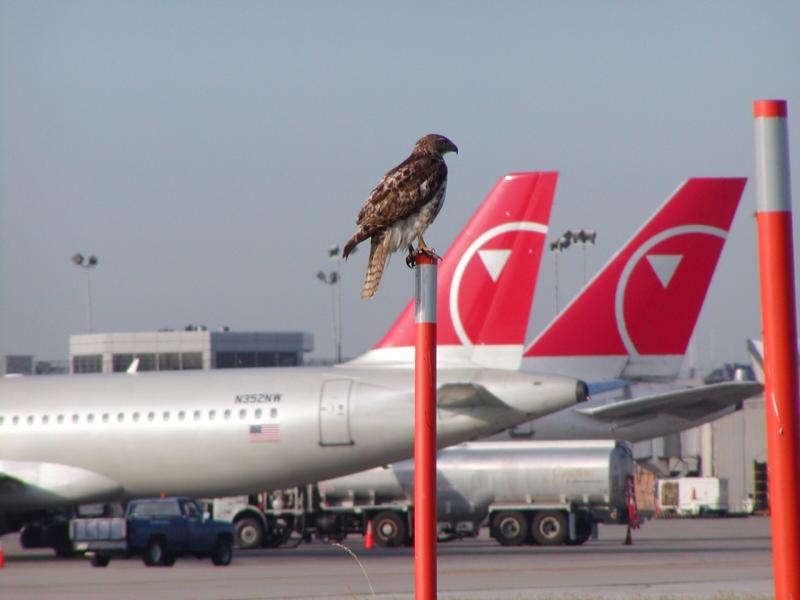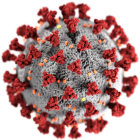Trade-offs
The diseases have not stopped appearing, so we are forced continually to make trade-offs. We pursue agricultural development (most recently the Green Revolution); every continent except Antarctica is now under its reign, and food abundance flows endlessly to the cities. So far the strategy has worked well for our kind; we now number nearly eight billion, most of us well fed, hale and hearty. More than half of us can now live in towns, cities, and megalopolises because our efficient world food system supports us. Even multiple waves of COVID-19, killing 100 million people or more, would not decrease our population much. In a single year or two we can make up the loss and replenish the earth. But this historical trade-off has required paying some gruesome costs. It entails severe injustice and collateral damage, and you or I may soon be among the losers.

New York City Subway entrance at Times Square 42nd Street New York City Manhattan 7th Avenue. Photograph by Mobilus In Mobili, 2015.
New York City Subway entrance at Times Square 42nd Street New York City Manhattan 7th Avenue. Photograph by Mobilus In Mobili, 2015.
Accessed via Flickr on 15 April 2020.
Click here to view source.
 This work is licensed under a Creative Commons Attribution-ShareAlike 2.0 Generic License.
This work is licensed under a Creative Commons Attribution-ShareAlike 2.0 Generic License.
Yet most of us remain uneducated in the science needed to understand epidemic history: the Darwinian revolution has given us astounding new knowledge that can explain more profoundly than ever our history on earth. Yet even now, ignorance, or cultural resistance, characterizes many citizens, including some university professors, corporate executives, and even experts in public health. They simply haven’t learned to think about disease in Darwinian terms, and thus they are doomed to repeat the ultimate causes of all the dying that keeps happening.
Here is what we should ask about the evolutionary and ecological history of the coronavirus. Where exactly did it originate? We need to talk about places, not to place blame on some people, but to understand a planetary challenge. We need to know the particular species involved (that is, which mutant organism living within which bat) but also the conditions of its habitat. We need to understand the ecosystemic changes that so many different places have been going through.

Red-tailed hawk at an airport in the United States. Photograph by USDA, 2015.
Red-tailed hawk at an airport in the United States. Photograph by USDA, 2015.
Courtesy of U.S. Department of Agriculture.
Accessed via Flickr on 15 April 2020.
Click here to view source.
 This work is licensed under a Creative Commons Public Domain Mark 1.0 License.
This work is licensed under a Creative Commons Public Domain Mark 1.0 License.
We need to ask how climate change or land-use change has affected the diversity of species living in that place. Have humans been shoving in to capture “bush meat,” or expand agriculture, and doing so in unprecedented numbers? Consequently, has species or population diversity diminished in that place? In the case of COVID-19, have virus carriers like local populations of bats (or snakes or pangolins or bamboo rats) been struggling to find food for themselves and their babies? What about the human demographics? What impact has local population growth, and international growth and markets, had on formerly isolated places?
Did the animals living in that original place of infection go through a time of disturbance and tension—and if so, what data can we get on their physical and mental condition? When did they get more sick than usual, and begin carrying more and more new pathogens in their bodies? Did viral mutations emerge that were well adapted to the changing conditions?
How then did sickened animals and their load of microorganisms manage to get all the way to cities like Wuhan, Milan, or New York? Once there, how might they have been mixed in with other animals, tame and wild, forced into tightly confined quarters, and how did their excrement, loaded with viruses and bacteria, get mixed with that of other animals? Why were they not still in their native habitats?
Why has the coronavirus spread so quickly to humankind? Is it because we too are living more packed together than we were even a few decades ago, and at the same time we have been enjoying greater freedom of movement across continents and the planet?

Amounts of airborne nitrogen dioxide have dropped with the coronavirus quarantine, Chinese New Year, and a related economic slowdown. Maps by Joshua Stevens, 2020.
Amounts of airborne nitrogen dioxide have dropped with the coronavirus quarantine, Chinese New Year, and a related economic slowdown. Maps by Joshua Stevens, 2020.
Courtesy of NASA Earth Observatory.
Click here to view source.
 This work is licensed under a Creative Commons Public Domain Mark 1.0 License.
This work is licensed under a Creative Commons Public Domain Mark 1.0 License.
Above all, do we know how to restore the balance of nature? How can we prevent such new destabilizing forces as man-made climate change and protect biodiversity? How can a better understanding of history, one more informed by scientific ecology and evolution, help us craft better strategies for our own survival? The core challenge presented by COVID-19 is whether we humans can or want to restore and protect the health, not just of ourselves, but also of the planet. If we focus only on the security of our own lives and the economy, we will fail again and again to keep either the planet or ourselves healthy.
The core challenge presented by COVID-19 is whether we humans can or want to restore and protect the health, not just of ourselves, but also of the planet. If we focus only on the security of our own lives and the economy, we will fail again and again to keep either the planet or ourselves healthy.
To assume a higher, broader responsibility we need to plant one basic truth deep in our skulls: we humans are animals too. What we do to our fellow creatures we do to ourselves. The deed will bounce back to hit us in the lungs or liver. Taking responsibility for our own role in making epidemics requires absolving the nonhuman agents. Yes, it is viruses or bacteria that become dreaded agents of death, but they are not guilty of any evil or crime. A virus is neither plant nor animal; it is a simple, primitive boundary organism, dating back to the origins of life on the planet. Its nature is simply to live as a parasite. It knows no guilt.

Earth by night. Image compiled by Robert Simmon (NASA), 2012.
Earth by night. Image compiled by Robert Simmon (NASA), 2012.
Courtesy of NASA Earth Observatory.
Click here to view source.
 This work is licensed under a Creative Commons Public Domain Mark 1.0 License.
This work is licensed under a Creative Commons Public Domain Mark 1.0 License.

A woman appreciates spring flowers in a Qingdao city park on 3 April 2020. Photograph by Shen Hou.
A woman appreciates spring flowers in a Qingdao city park on 3 April 2020. Photograph by Shen Hou.
2020 Shen Hou.
 This work is licensed under a Creative Commons Attribution 4.0 International License.
This work is licensed under a Creative Commons Attribution 4.0 International License.
Let us acknowledge too that we humans are also a kind of virus. We too have become epidemic on earth. Viruses “want” only one thing: to find a host, attach and grow, reproduce, spread, and increase in numbers. How is that different from what humans do or want? We want to reproduce and increase our numbers, and the way we do that is to become parasites on others. We have emerged through genetic mutation and, wonderfully, we have survived, spreading to all the continents and finding plenty of “hosts” that we force to support our drive to reproduce. It is precisely because of our biological nature that we find ourselves the architects of our own tragedy.
That was Rachel Carson’s message at the dawn of the age of ecology: We humans can be safe and healthy only when this living planet is also safe and healthy. Are we smart enough to see this fact and are we determined enough to act on it? Do we have a capacity for humility as well as intelligence? For both qualities are required to create a civilization unlike any other, one that has learned how to think ecologically.
- Previous chapter
- Next chapter







